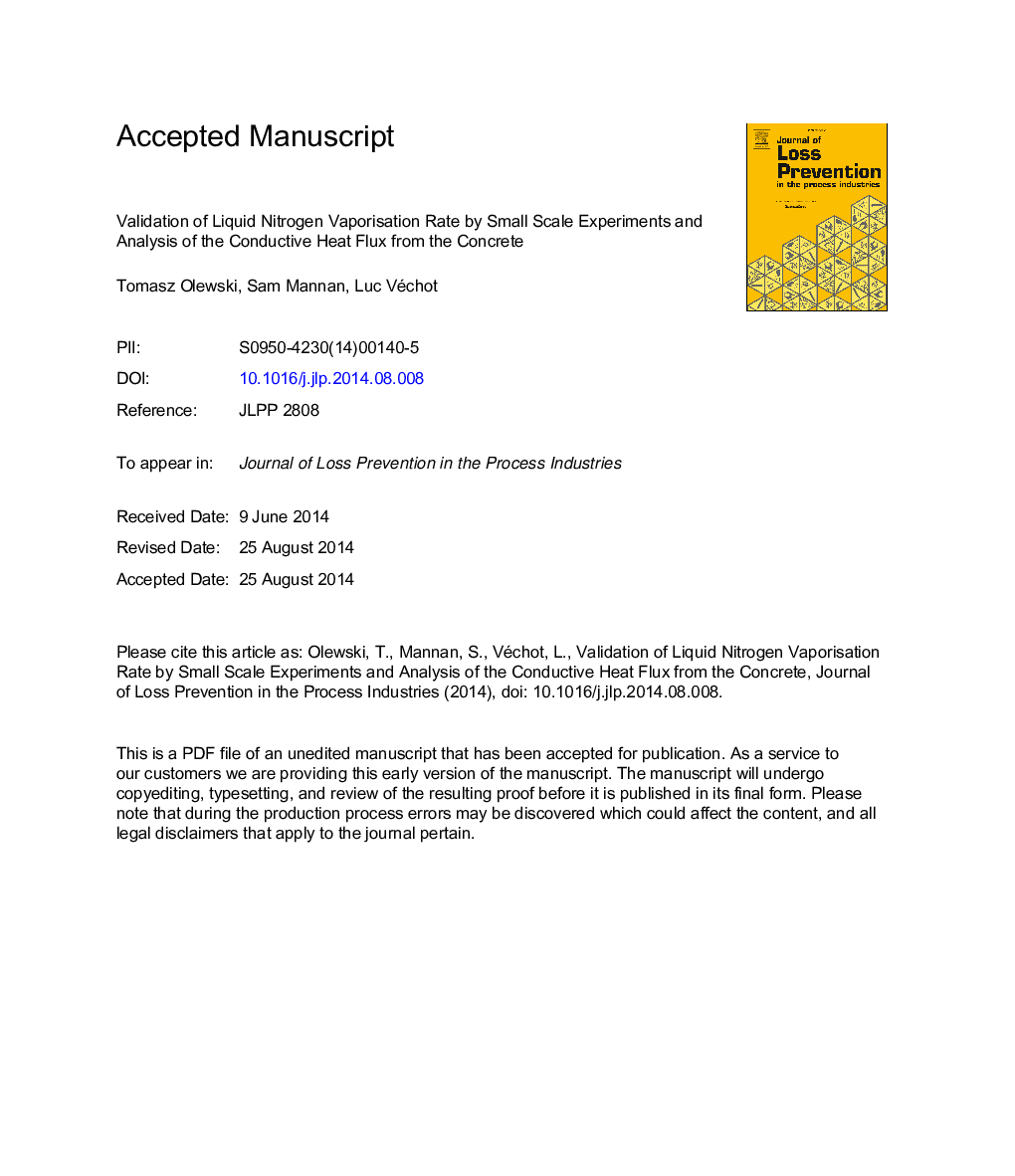| Article ID | Journal | Published Year | Pages | File Type |
|---|---|---|---|---|
| 6973365 | Journal of Loss Prevention in the Process Industries | 2015 | 10 Pages |
Abstract
The vaporisation of a liquid nitrogen pool spilled on concrete ground was investigated in small scale field experiments. The pool vaporisation rate and the heat transfer from the concrete ground were measured using a balance and a set of embedded heat flux sensors and thermocouples. The ability to predict the concrete's thermal properties based on these measurements was investigated. This work showed that a simple, one-dimensional theoretical model, assuming heat conduction through a semi-infinite ground with ideal contact between the cryogenic liquid and the ground, commonly used to describe the heat transfer from a ground to the LNG, can be used to match the observed vaporisation rate. Though estimated parameters, thermal conductivity and thermal diffusivity, do not necessary represent real values. Although the observed vaporization rate follows a linear trend, and thus can be well represented by the model, the overall model prediction seems to be overestimated. The temperature profile inside the concrete is slightly over-predicted at the beginning and under-predicted at later stage of the spill. This might be an effect of the dependence of the concrete's thermal properties on the temperature or may indicate an incorrect modelling and a varying temperature of the ground surface.
Related Topics
Physical Sciences and Engineering
Chemical Engineering
Chemical Health and Safety
Authors
Tomasz Olewski, Sam Mannan, Luc Véchot,
